Chequered skipper could refer to any of the following butterfly species:
- Carterocephalus palaemon also known as arctic skipper
- Large chequered skipper, Heteropterus morpheus
- Kedestes lepenula
Chequered skipper could refer to any of the following butterfly species:
Mallow or mallows may refer to:
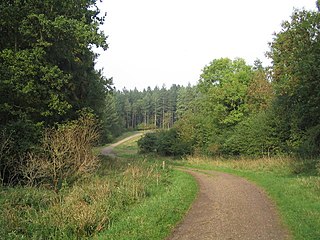
Rockingham Forest is a former royal hunting forest in the county of Northamptonshire, England. It is an area of some 200 sq mi (500 km2) lying between the River Welland and River Nene and the towns of Stamford and Kettering. It has a rich and varied landscape, with farmland, open pasture, pockets of woodland and villages built from local stone.

The large skipper is a butterfly of the family Hesperiidae.

The large chequered skipper is a butterfly of the family Hesperiidae. It is the single member of the monotypic genus Heteropterus. The species can be found in isolated populations in Europe and east across the Palearctic to Central Asia and Korea. It is endangered in the Netherlands.
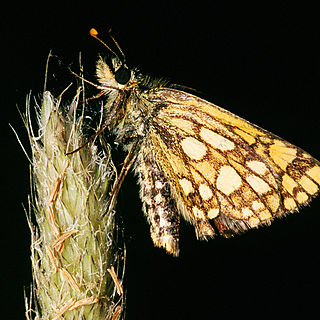
Carterocephalus is a Holarctic genus of skipperlings in the skipper family, Hesperiidae.

Pyrgus is a genus in the skippers butterfly family, Hesperiidae, known as the grizzled skippers. The name "checkered" or "chequered skipper" may also be applied to some species, but also refers to species in the genus Carterocephalus. They occur in the Holarctic with an additional group of species extending to the Neotropic.

Carterocephalus silvicola, the northern chequered skipper, is a butterfly of the family Hesperiidae. It is found in northern Europe and north and east Asia.
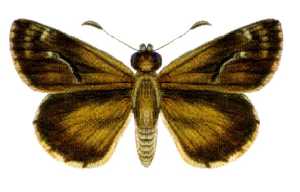
Anisynta dominula, the two-brand grass-skipper or dominula skipper, is a butterfly of the family Hesperiidae. It is found in Australia in the mountains of New South Wales, Tasmania and Victoria.

Anisynta tillyardi, the chequered grass-skipper or Tillyard's skipper, is a butterfly of the family Hesperiidae. It is found in Australia in the Dividing Range, at heights of over 1,000 metres in southern Queensland and northern New South Wales.
Checkered skipper, checkered-skipper, or chequered skipper may refer to a variety of butterflies in the family Hesperiidae:
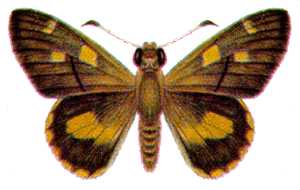
Hesperilla mastersi, the chequered sedge-skipper or Master's skipper, is a butterfly of the family Hesperiidae. It is found in the Australian states of New South Wales, Queensland and Victoria. It was also found in Tasmania, but the small area where its food plant was growing was cleared to provide cattle pasture. It is probably now extinct in Tasmania.
Kedestes lepenula, the chequered ranger or chequered skipper, is a butterfly of the family Hesperiidae. It is found from the central East Cape through the western part of the Free State, the eastern part of North West Province into the dry western parts of the Limpopo Province up to Polokwane. It is also found in Botswana.

The chequered skipper or arctic skipper, not to be confused with the large chequered skipper, is a small woodland butterfly in the family Hesperiidae. This butterfly can live in grasslands. The upperside of the butterfly is brown with orange spots and on its underside the chequered skipper is orange with brown spots. Chequered skippers are found in Great Britain and other European regions, but seen locally in Japan and in North America. The size of the chequered skipper ranges from 19 to 32 mm with females being larger. In the 1970s, the chequered skipper went extinct in England due to the new management of the woodlands.
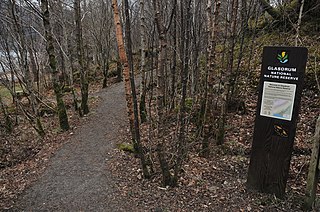
Glasdrum Wood is national nature reserve (NNR) at the head of Loch Creran in Argyll and Bute on the west coast of Scotland. Managed by NatureScot, the wood is renowned for its diverse flora and fauna, including sessile oak and ash trees, mosses, liverworts and rare invertebrates, like the chequered skipper butterfly. The NNR covers an area of around 169 hectares, encompassing woodland and hillside on the lower slopes of Beinn Churlain. A carpark and 1 km-long waymarked trail are provided for visitors. Since 2004 the reserve has received approximately 2800 visitors each year.